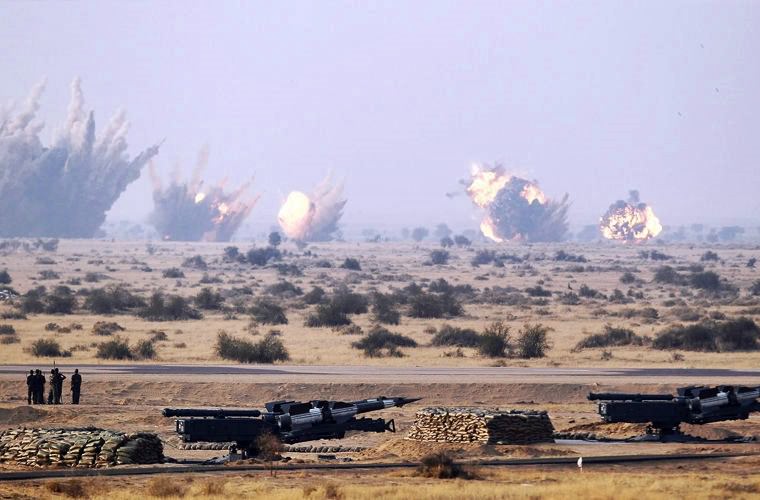Pakistan’s nuclear program holds significant historical importance and plays a crucial role in shaping the country’s security dynamics. This article provides an overview of Pakistan’s nuclear program history, including its first nuclear test, the number of nuclear weapons in Pakistan, and its current ranking as a nuclear power.
Pakistan’s Nuclear Program History:
Pakistan’s nuclear program traces back to the early 1950s when the Pakistan Atomic Energy Commission (PAEC) was established. However, it wasn’t until the 1970s that the program gained momentum. Under the leadership of Dr. Abdul Qadeer Khan, Pakistan made remarkable progress in developing its nuclear capabilities.
The Pakistan Atomic Energy Commission (PAEC) reported that these tests generated a seismic signal of 5.0 on the Richter scale, with a total yield of up to 40 kilotons. This article explores the details and significance of Pakistan’s nuclear tests, including the Chagai-I tests, the socio-political climate surrounding them, and their impact on the region.
Brief History of Pakistan’s Nuclear Program
Pakistan’s nuclear weapons program was initiated by Zulfiqar Ali Bhutto in 1972, following the loss of East Pakistan in the 1971 war with India. Bhutto, who later became president and prime minister, established the program with the participation of physicists and engineers at a meeting in Multan in January 1972.
The urgency to demonstrate Pakistan’s nuclear capability grew after India’s tests, aiming to prevent India from gaining a unilateral technical advantage and to recalibrate the power dynamics between the two nations. Pressure for conducting the tests
The Chagai-I Tests
The Chagai-I tests marked Pakistan’s first public display of nuclear weapons capability. These tests were conducted at Ras Koh Hills in the Chagai district of Balochistan. The timing of Chagai-I was a direct response to India’s second nuclear tests, which took place on May 11 and 13, 1998. Pakistan claimed to have conducted six nuclear tests, with one device reportedly left undetonated.

Dr Abdul Qadeer Khan, the architect of Pakistan’s nuclear weapons program, stated that one device was a boosted fission device, while the other four were sub-kiloton nuclear devices. Following these tests, on May 30, 1998, Pakistan conducted another nuclear test with a reported yield of 12 kilotons.
Socio-Political Climate
The context in which Pakistan conducted its nuclear tests is crucial to understanding their significance. The tests came in the aftermath of India’s nuclear tests and demonstrated Pakistan’s response as a nuclear power. By becoming one of the nine states possessing nuclear weapons, Pakistan aimed to safeguard its security and ensure a balance of power in the region.
The timing of Chagai-I, specifically chosen as a response to India’s nuclear tests, is seen by many as a decisive factor in preventing a full-scale war between India and Pakistan.
Operation Brasstacks
Operation Brasstacks, executed by the Indian Army in 1986, was a significant military exercise conducted near the border with Pakistan in the Rajasthan state of India. While India claimed that the operation was meant to test new concepts in Indian warfare, the presence of over 600,000 Indian troops near the border raised concerns in Pakistan. Many believe that Operation Brasstacks was not merely a military exercise but a scheme to build up the situation for a potential fourth war with Pakistan.
Timeline
The timeline leading up to Pakistan’s nuclear tests sheds light on the events that influenced its decision. In December 1989, armed resistance to Indian rule in occupied Kashmir began with support from Pakistan.
In April 1990, a crisis erupted in the valley as Indian military mobilization threatened to incite war between the two neighboring countries. Finally, in May 1998, India’s detonation of five nuclear devices pushed Pakistan to respond with its own tests, averting a full-scale India-Pakistan war.
Pakistan’s First Nuclear Test:
On May 28, 1998, Pakistan conducted its first publicly acknowledged nuclear test, codenamed Chagai-I. This test took place at Ras Koh Hills in the Chagai district of Balochistan. It was a direct response to India’s nuclear tests conducted earlier in May 1998. The timing of Pakistan’s nuclear test was seen as a strategic move to ensure a balance of power in the region.

Number of Nuclear Weapons in Pakistan:
The exact number of nuclear weapons in Pakistan remains undisclosed. However, various estimates suggest that Pakistan possesses a significant arsenal. According to the Stockholm International Peace Research Institute (SIPRI), as of 2022, Pakistan is estimated to have approximately 165 nuclear warheads. It is important to note that these figures are subject to change due to ongoing developments in Pakistan’s nuclear program.
List of Pakistan’s Nuclear Weapons:
The specific details regarding Pakistan’s nuclear weapons are classified. Therefore, an official list of Pakistan’s nuclear weapons is not publicly available. However, it is widely believed that Pakistan’s nuclear arsenal includes a variety of weapon types, ranging from tactical nuclear weapons to strategic warheads. These weapons are designed to ensure a credible deterrence capability.
Pakistan’s Nuclear Power Ranking:
Pakistan is recognized as a nuclear power on the global stage. Its possession of nuclear weapons and a well-established nuclear infrastructure places it among the nine states that are known to possess nuclear capabilities. While Pakistan’s exact ranking may vary depending on the criteria used for evaluation, it is generally acknowledged as an important player in the nuclear arena.
FAQ:
When did Pakistan become a nuclear power?
Pakistan became a nuclear power on May 28, 1998, when it conducted five nuclear tests in the Chagai district of Balochistan province. These tests were a direct response to India’s nuclear tests that were conducted just a few weeks earlier in May 1998.
What do we call the day when Pakistan became a nuclear power?
The day when Pakistan became a nuclear power is often referred to as “Youm-e-Takbir,” which means “Day of Greatness” in Urdu. This day is celebrated every year in Pakistan to mark the country’s successful nuclear tests.
When did India and Pakistan become nuclear powers?
India and Pakistan both became nuclear powers in May 1998. India conducted five nuclear tests on May 11 and 13, 1998, while Pakistan conducted its own tests on May 28, 1998.
Why is Pakistan a nuclear power?
Pakistan became a nuclear power to deter India from using its superior conventional military strength to threaten Pakistan’s security. India and Pakistan have fought three major wars since their independence in 1947, and there have been numerous other border skirmishes and military standoffs between the two countries. By acquiring nuclear weapons, Pakistan sought to create a credible deterrent against any possible Indian aggression.
How did Pakistan become a nuclear power?
Pakistan’s nuclear program began in the 1950s with the establishment of the Pakistan Atomic Energy Commission (PAEC). However, it was not until the 1970s that Pakistan’s nuclear program began to take on a more concrete form. In the 1980s and 1990s, Pakistan’s nuclear program received significant assistance from China and North Korea.
Pakistan’s nuclear weapons program was led by Dr. Abdul Qadeer Khan, who is widely regarded as the father of Pakistan’s nuclear program. Khan and his team were able to develop and test nuclear weapons in 1998 after years of secret research and development.


